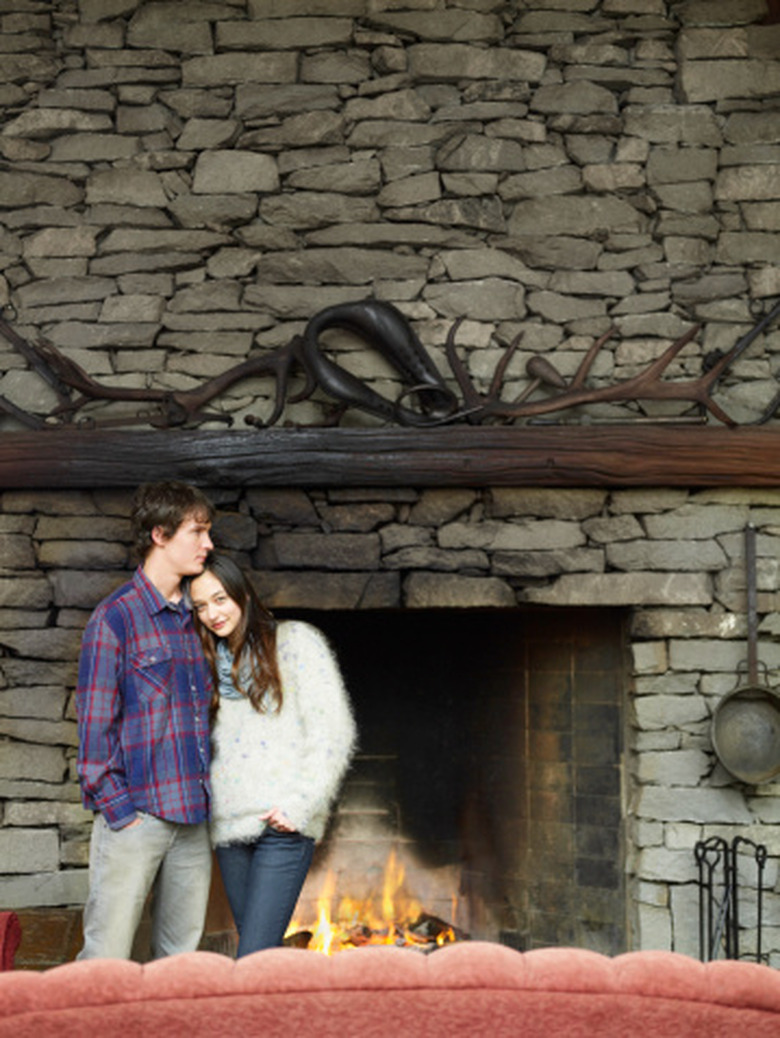How To Stop The Smoke From A Fireplace On A Windy Day
Things Needed
-
Newspaper
-
Fireplace doors
-
Tape measure
-
Chimney cap
-
Vent pipe attachment
Tip
Have a working carbon monoxide detector in the room with the fireplace to warn you about dangerous gas buildup.
Fireplaces offer an additional heating option for your home, as well as a relaxing ambiance. The chimney is designed to remove smoke from the fireplace and vent it outside of the home, but you can still end up with some smoke wafting through your house. The smoke can be worsened on a windy day, and it could be bothersome if you are inhaling it over any length of time. Stopping smoke from a fireplace on a windy day requires some diligence.
Step 1
Heat the flue before lighting your fire by lighting newspaper and holding it up to the chimney for a moment, which will make the flue start working faster and help prevent smoke buildup. The flue is a chamber used for venting fireplace gases up the chimney, and it is usually closed when the fireplace is not in use for insulation purposes. The heat from the newspaper will help it open.
Step 2
Keep the doors to the fireplace closed to prevent any excess smoke being blown back down the chimney from blowing back into the room itself.
Step 3
Measure the length and width of your chimney opening with a tape measure so you can fit it for a chimney cap, which is specifically designed to protect your chimney against wind exposure. Attach the chimney cap to the top of your chimney opening. This is done in multiple ways depending on your specific model, so consult your supplier to ensure it is done effectively. A single-flue chimney cap slips on over the top of the flue, and screws are tightened around it to lock it into place. An inside-mount chimney cap is pushed into the flue to form a tight fit, and then sealed with a silicone sealer. If you have a metal flue, skip the sealer since the metal will expand when it gets hot to seal itself.
Step 4
Fit a metal pipe attachment to your outside vent to angle the opening upward if you have a horizontal-facing vent. A 90-degree pipe attachment would fit right over the vent opening, and wind won't get into the venting as easily once the opening is facing upwards instead of sideways. The pipe attachment fits in a similar fashion to a chimney cap; it slides into the vent and can then be sealed since the vent and pipe won't be as hot as a metal flue. The pipe should extend 3 feet higher than the roof and at least 2 feet higher than anything within a 10-foot radius.
